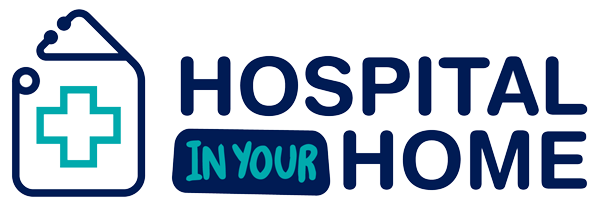
Revolutionizing Healthcare Delivery: How Remote Patient Monitoring (RPM) is Transforming Chronic Conditions
Chronic diseases present a significant challenge to healthcare systems globally, demanding continuous management and proactive intervention. Traditional models often rely on scheduled in-person visits, which can be inconvenient, costly, and insufficient for timely monitoring. This is where Remote Patient Monitoring (RPM) steps in, offering a paradigm shift in how chronic conditions are managed.
What is Remote Patient Monitoring (RPM)?
RPM involves the use of digital technologies to collect and transmit patient health data from their home or a non-clinical setting to healthcare providers. This data can include vital signs, symptoms, medication adherence, and other relevant information. By enabling continuous monitoring, RPM facilitates early detection of deterioration, personalized interventions, and improved patient outcomes.
How RPM is Revolutionizing Healthcare Delivery:
Enhanced Patient Engagement and Empowerment:
RPM empowers patients to take an active role in their care by providing them with tools to monitor their health at home.
Real-time feedback and personalized insights motivate patients to adhere to treatment plans and adopt healthier lifestyles.
Increased awareness of their health status fosters a sense of control and reduces anxiety.
Improved Access to Care:
RPM breaks down geographical barriers, enabling patients in remote or underserved areas to access quality healthcare.
It reduces the need for frequent in-person visits, minimizing travel time and costs for patients and caregivers.
Virtual consultations and remote monitoring facilitate timely interventions, preventing unnecessary hospitalizations.
Proactive and Personalized Care:
Continuous data collection enables early detection of subtle changes in patient health, allowing for timely interventions.
Healthcare providers can tailor treatment plans based on real-time data and individual patient needs.
Predictive analytics can identify patients at high risk for complications, enabling proactive management and preventative measures.
Reduced Hospitalizations and Healthcare Costs:
Early detection and timely interventions prevent exacerbations and complications, reducing the need for hospitalizations.
RPM optimizes resource utilization by streamlining care delivery and reducing unnecessary visits.
Improved medication adherence and lifestyle management contribute to better long-term health outcomes and lower healthcare costs.
Enhanced Care Coordination:
RPM facilitates seamless communication and data sharing among healthcare providers, caregivers, and patients.
It enables coordinated care across different healthcare settings, ensuring continuity of care and preventing fragmented services.
Patient data can be shared in real time with doctors, nurses, and family members.
Examples of RPM in Chronic Condition Management:
Diabetes: Continuous glucose monitoring (CGM) and connected blood glucose meters enable real-time blood sugar monitoring and personalized insulin adjustments.
Heart Disease: Remote monitoring of blood pressure, heart rate, and electrocardiograms (ECGs) facilitates early detection of arrhythmias and heart failure exacerbations.
Chronic Obstructive Pulmonary Disease (COPD): Smart inhalers and remote monitoring of oxygen saturation and respiratory rate enable proactive management of exacerbations.
Hypertension: Connected blood pressure cuffs allow for regular blood pressure monitoring and timely medication adjustments.
Challenges and Future Directions:
While RPM offers numerous benefits, challenges such as data privacy, security, and interoperability need to be addressed. Future directions include:
- Integration of AI and machine learning to enhance data analysis and personalized interventions.
- Development of more user-friendly and accessible RPM devices and platforms.
- Expansion of RPM services to address a wider range of chronic conditions.
- Addressing the digital divide to ensure that RPM is accessible to all populations.
- RPM is transforming healthcare delivery for chronic conditions by empowering patients, improving access to care, and enabling proactive and personalized management. As technology continues to advance, RPM will play an increasingly vital role in improving the lives of millions living with chronic diseases.
Sources:
- “Remote Patient Monitoring: A Practical Guide for Clinicians.” American Family Physician, 2021. https://www.aafp.org/pubs/afp/issues/2021/0615/p743.html
- “Remote Patient Monitoring for Chronic Disease Management.” National Institutes of Health (NIH). https://www.ncbi.nlm.nih.gov/pmc/articles/PMC8949826/
- “Remote Patient Monitoring (RPM) in Chronic Care Management.” Centers for Medicare & Medicaid Services (CMS). https://www.cms.gov/Medicare/Medicare-Fee-for-Service-Payment/PhysicianFeeSched/Downloads/RPM-Fact-Sheet.pdf
- “The impact of remote patient monitoring on clinical and economic outcomes: a systematic review.” Journal of Telemedicine and Telecare, 2020. https://journals.sagepub.com/doi/10.1177/1357633X20921471
- “Remote Patient Monitoring: A Review of Current Literature and Future Directions.” Journal of Medical Systems, 2022. https://link.springer.com/article/10.1007/s10916-022-01861-1
